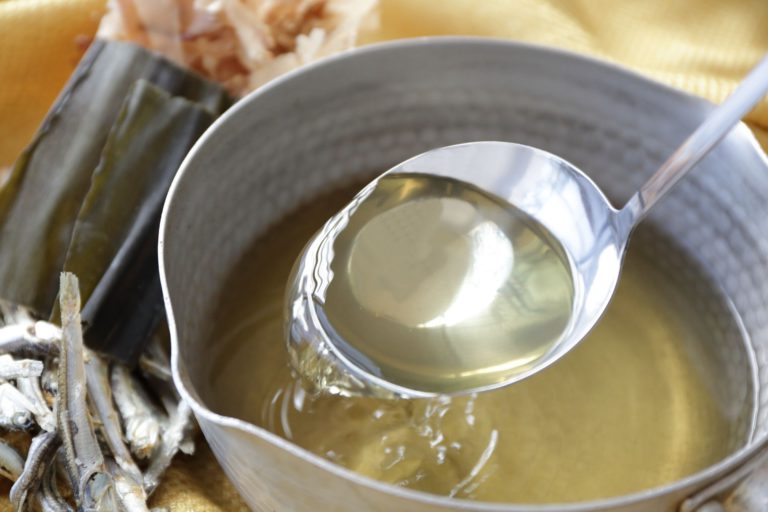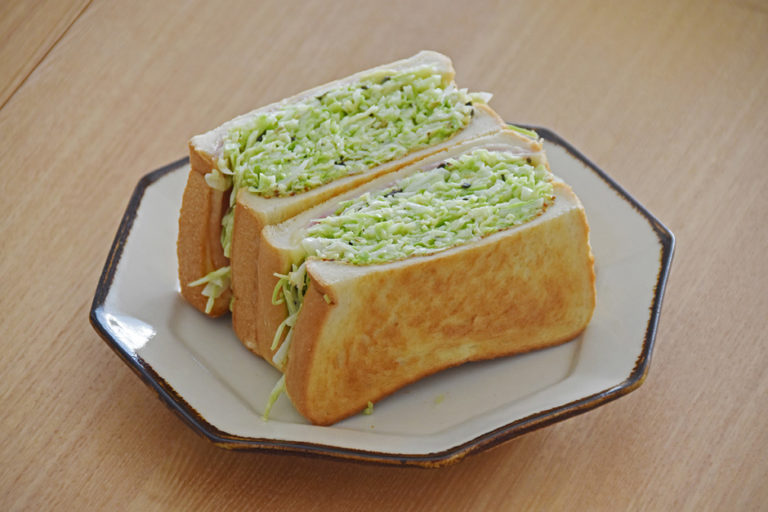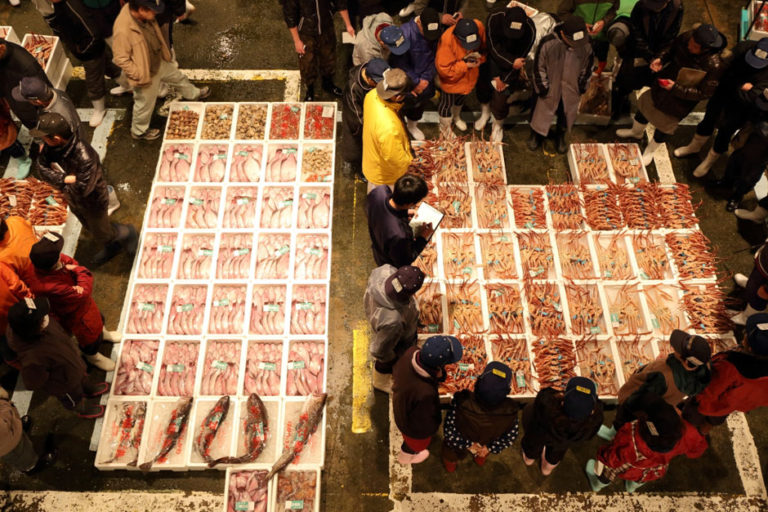Learning about the Endless Variety of Yakitori Flavors from History
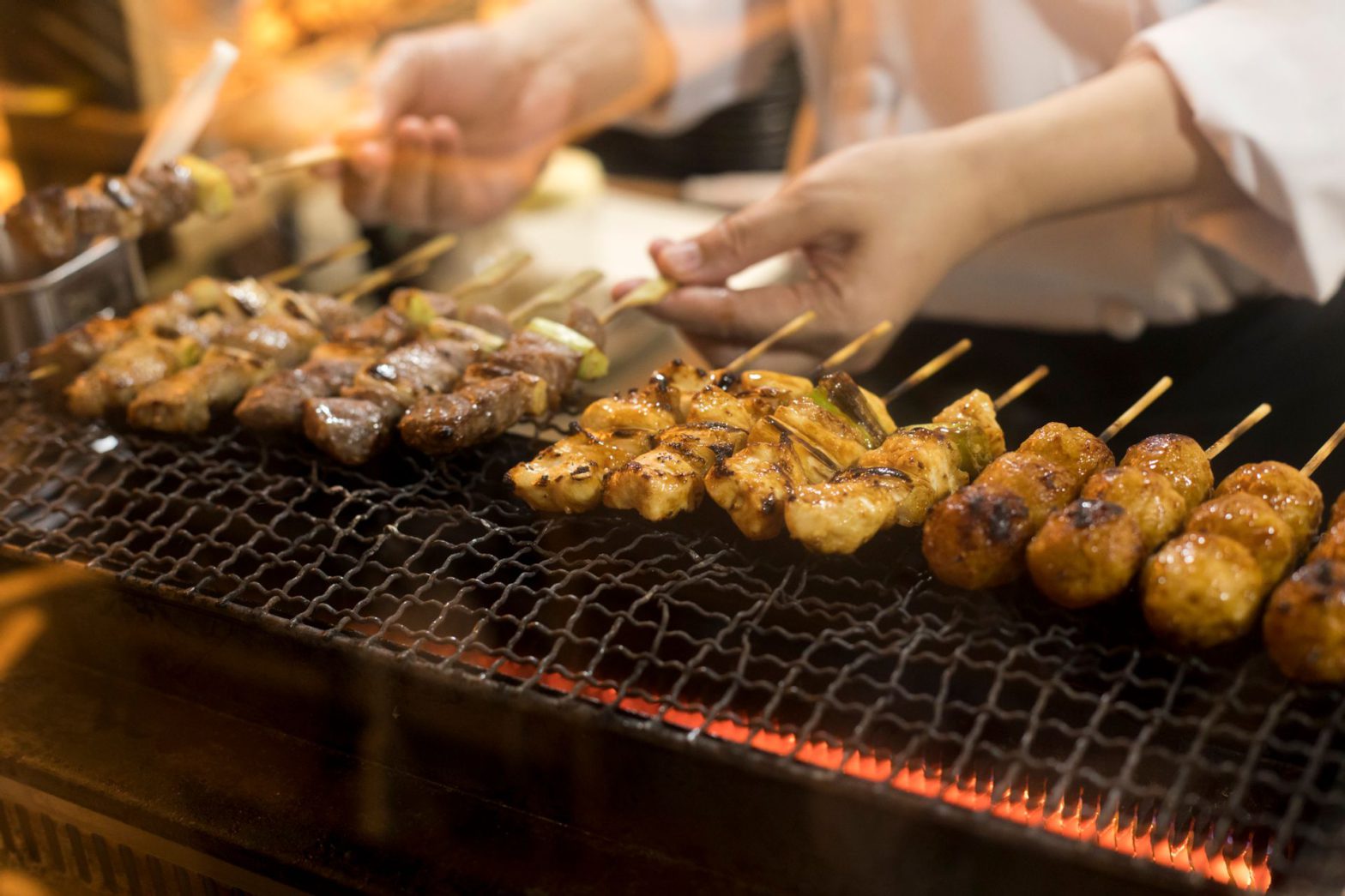
The origins of yakitori according to written accounts
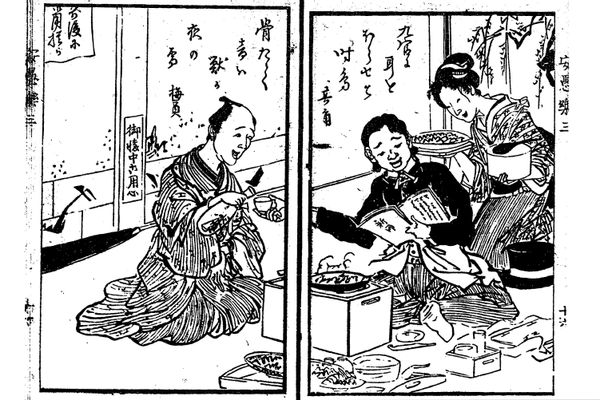
On interpreting the history of yakitori in written accounts, we see that a grilled chicken dish first made an appearance in the Essays in Idleness from the Kamakura period. (The year of completion is unknown; one theory suggests 1331.) The essays mention a grilled pheasant dish.
The term yakitori is found in Japan’s oldest cookbook from the Edo period, Ryori Monogatari (1643). However, as there is also a different term, kushiyaki, the yakitori from that period is likely to have been a grilled poultry dish without skewers.
A grilled poultry dish on skewers first appeared as a dish called Nagasaki Toridengaku in Manpo Ryori Himitsubako (1785), which introduced various egg dishes.
Grilled poultry on skewers reached the masses after the Meiji Restoration. From ancient times, Japanese people considered eating meat to be unclean and many refrained from doing so even when beef consumption became fashionable due to Westernization after the Meiji Restoration.
Hunger caused by poverty made people overcome such biases. It cost very little to obtain discarded offal from abattoirs and cook it to disguise the stench, which provided a nutritious meal for that time.
In regions east of Kanto, people frequently ate pork offal dishes such as yakiton and motsu-yaki, calling them yakitori. Pork, primarily in the form of tonkatsu, was popular in Kanto since it was cheap to obtain pilfered pork scraps. It is said that yakiton also came to be called yakitori, as it was hard to distinguish pork from chicken once it was skewered and flavored with a sauce.
Yakitori becomes popular as an everyday dish
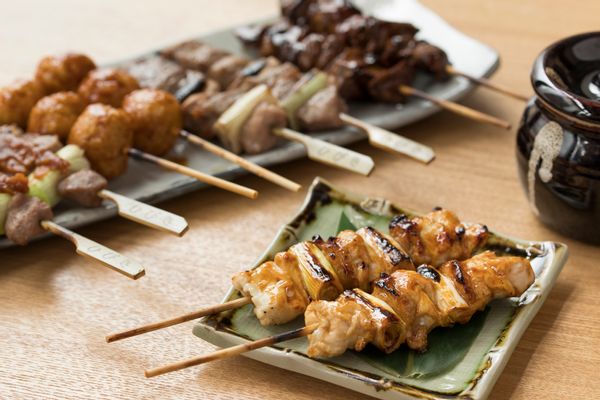
The story goes that yakitori became popular as an everyday dish after the Great Kanto Earthquake of 1923. Inexpensive food ingredients, such as offal, became highly valued for survival in the burnt-out ruins.
Many yakitori shops popped up in black markets after World War II, as anyone could open a shop as long as they had meat and a charcoal grill.
The ordinary folks loved its enjoyable flavors, and even today there are still many yakitori shops from the black markets that have survived in Shinbashi, Yurakucho, Shinjuku, and Shibuya.
Broilers (chicken as food) appeared in the 1960s, and chicken became synonymous with poultry. The development of broilers that could be mass-produced exponentially popularized yakitori. Chicken branding was advanced by the Jidori (regional pedigree chicken), such as Hinai Jidori, Nagoya Kochin, and Satsuma Jidori, which meet certain conditions, and the emergence of branded chicken raised by paying much attention to their feed, in pursuit of flavors.
In this way, Japan’s yakitori culture spread widely.
Yakitori across Japan is rooted in the land
Yakitori has created unique food cultures in various regions. Let us look at some distinctive yakitori throughout the country.
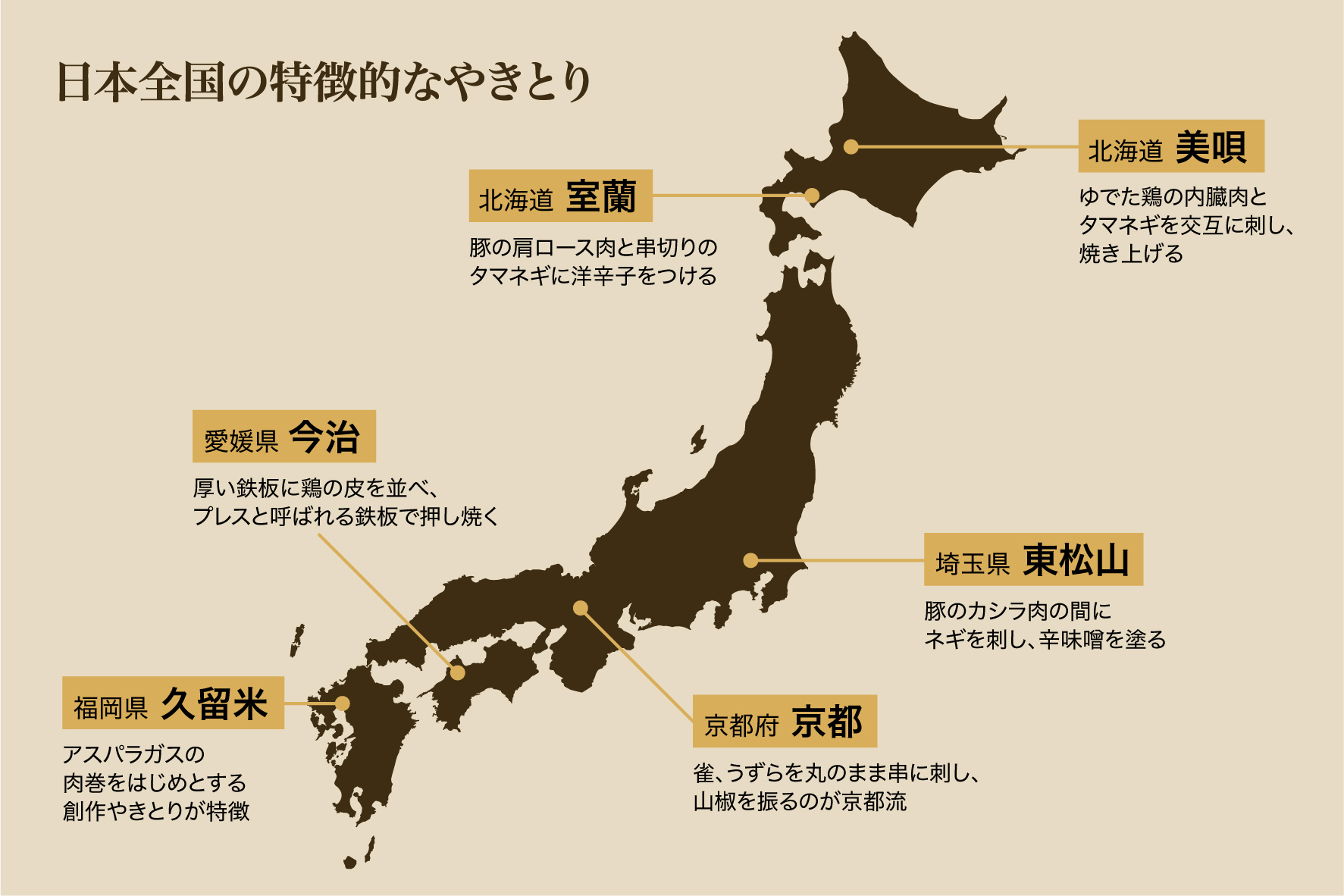
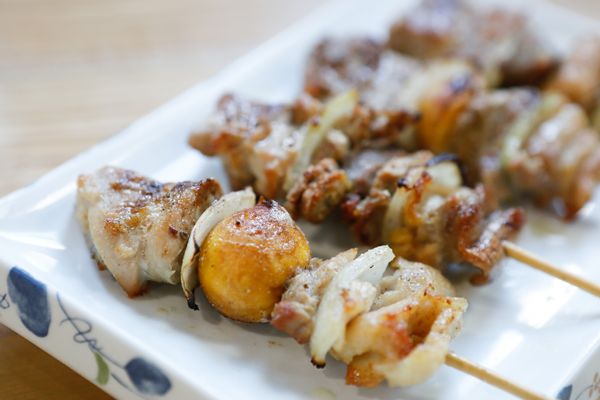
A yakitori that has its origin in stolen chicken grilled with salt and enjoyed whole – Bibai, Hokkaido
Typical ingredients: thigh, liver, heart, gizzard, unlaid egg, skin, and onion.
Various ingredients, such as the chicken thigh, offal, unlaid egg, skin, and locally grown special onion, are skewered together, seasoned with salt and pepper, and grilled. It is common to skewer the skin at the bottom and top with thigh meat. This is so that the skin at the bottom keeps the skewer from moving, and the chicken thigh that provides the most umami flavor is enjoyed first.
Bibai’s yakitori dates back to about 1955. Fukutaro Mifune came up with the idea of selling motsu-gushi using offal and skin after thinking about what he could do with the parts that yakitori shops were discarding.
It is said that the government had been supplying Bibai with breeding pairs of chicken since the frontier days in the Meiji period. Each family looked after the chickens and ate them from beak to tail on special occasions. Bibai’s yakitori is unique to a region where a culture of appreciating chicken had taken root.
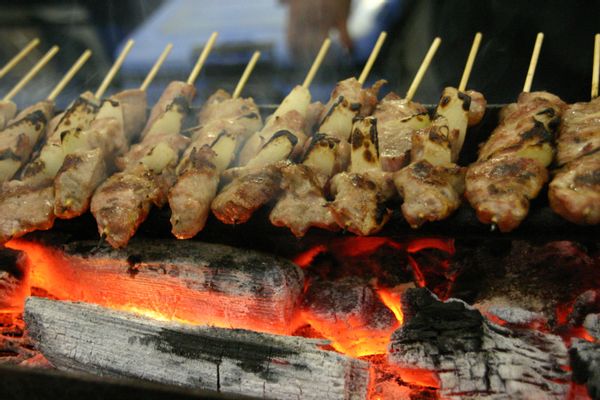
The history of pig farming and regional ingredients/climate are combined in the yakitori – Muroran, Hokkaido
Typical ingredients: shoulder loin, onion, and mustard.
Pork shoulder loin and onion rings are skewered alternately, dipped in a sweet-spicy sauce, and enjoyed with mustard.
When the Russo-Japanese War broke out in 1904, pig farming was promoted across Japan to increase food production and to produce leather for military boots. In Muroran, people were allowed to consume the leftover parts of pigs as food and many local food stalls began serving pork, and today’s combination of pork shoulder loin, onions, and mustard established itself due to this trend. Other contributing factors were the cheapness of onions, which are a Hokkaido regional specialty, compared with long green onions, their long shelf-life in the snowbound region in the winter, and their compatibility with pork.
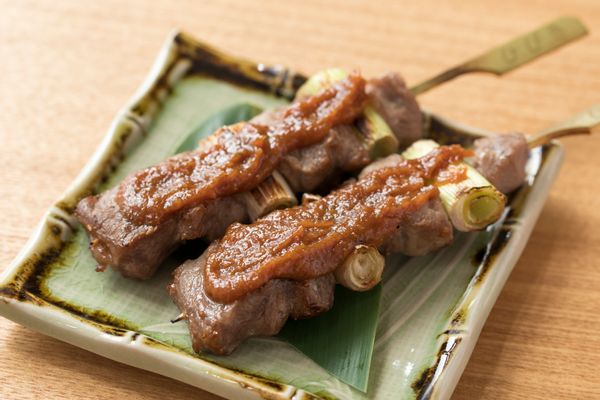
Pork yakitori served with miso has survived to this day– Higashi-Matsuyama, Saitama Prefecture
Typical ingredients: pork head, long green onion, and spicy miso
Higashi-Matsuyama’s yakitori uses pork head instead of chicken. Pork head refers to the meat on the temple and cheek of the pig.
Pigs have been raised in Saitama Prefecture since the olden days, and yakitori made with pork came into being shortly after World War II. From 1955, pork head meat, seldom previously used as food, could be obtained fresh and inexpensively from meat centers. It is said that the dish was created when vendors began serving grilled head meat. Freshness is crucial to head meat, which has firm muscles, a distinctive texture, and an umami flavor. Different shops have their own unique miso sauces, but a spicy one with a chili pepper kick is the most common. Locals enjoy yakitori topped with miso.
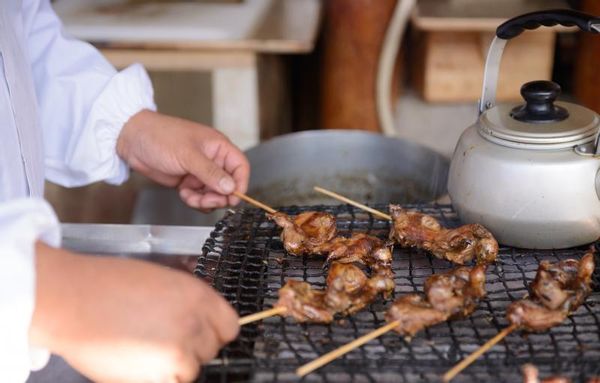
Wildfowl yakitori descended from ancient dishes – Kyoto, Kyoto Prefecture
Typical ingredients: sparrow, quail
The Chronical of Japan Continued (797) introduced pheasant, duck, and chicken as food. Even today, people eat wildfowl yakitori on the path to the Fushimi Inari Shrine in Kyoto, Kyoto Prefecture.
The yakitori enjoyed there is made with sparrow or quail, cooked whole on skewers, and sprinkled with sansho (prickly ash) pepper. There are various hypotheses about how people came to eat sparrows. One theory indicates that it originated in the extermination of sparrows as they damaged crops at the Fushimi Inari Shrine, which is dedicated to the deities of a bountiful cereal harvest. Another theory states that sparrows were used as an offering to the gods and that people ate the leftovers.
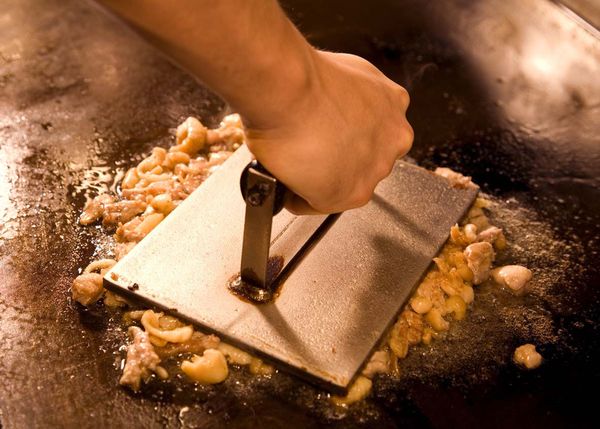
Yakitori cooked on an iron plate without skewers – Imabari, Ehime Prefecture
Typical ingredient: chicken skin
Yakitori in Imabari involves laying pieces of chicken skin on an iron plate and pressing them down with an iron press with a handle to cook.
Cheap and delicious Imabari yakitori, which could be served quicker than char-grilled or flame-grilled yakitori, sprung from establishments that followed on from Gomitori, the shop that created it. The teppanyaki-style variant evolved and spread as a regional dish.
Besides the skin, senzanki is essential when speaking of Imabari yakitori. It refers to fried chicken enjoyed in the Imabari region, and its popularity is such that there is now a rule; begin with the skin and finish with the senzanki.

A wide variety of yakitori created out of the history of horse meat culture and a boom in original yakitori creations – Kurume, Fukuoka Prefecture
Typical ingredients: chicken, pork, beef, horse meat, offal, and vegetables
Kurume yakitori involves many original rolled yakitori creations, and besides chicken, it uses pork, beef, horse meat, and offal, even vegetables turn into yakitori when skewered. Warhorses were raised in Kurume, which used to have a military facility, and since the city developed as the cargo transfer point for Fukuoka and Kumamoto, it has an established horse meat culture. When you enter a restaurant, you are first served with cabbage dressed in vinegar sauce, and unfamiliar words such as darumu and harutsu abound as you place your order. The story goes that Kurume yakitori terms are derived from German words, because medical students from the Kyushu Medical School (Kurume University) placed orders in German.
In recent years, Yakitori Teppo in Kurume became the first place in Japan to serve asparagus wrapped in meat, sparking a boom in original yakitori creations in eateries across the city.
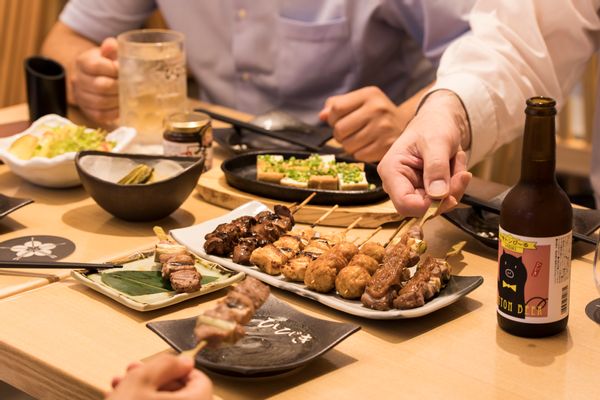
Each region’s yakitori has its own history and characteristics, such as the yakitori seasoned with garlic powder in Nagato, Yamaguchi Prefecture, and the yakitori dipped in garlic soy sauce in Ueda, Nagano Prefecture.
Yakitori is enjoyed throughout Japan. The ingredients and cooking methods vary by region, and it is eaten in various places, including food stalls, restaurants, and homes. Yakitori has become one of the dishes that represent Japan.


